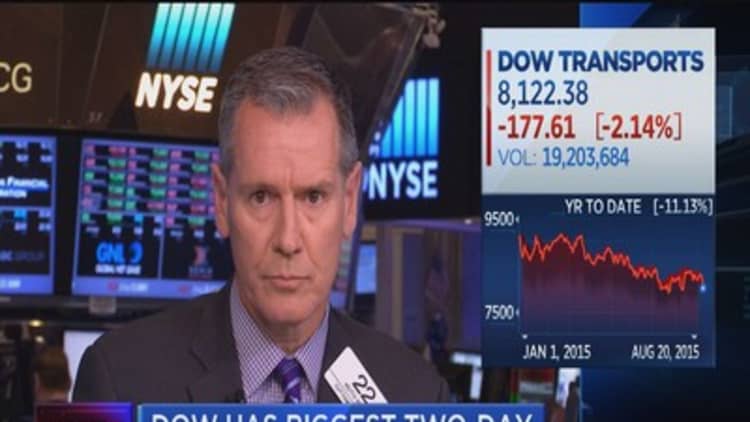


Stocks limp into Friday technically weakened and vulnerable to more selling.
Stocks sold off Thursday in the worst day of the last year and a half, with the Dow down 358 to 16,990 and the off 43, or 2.1 percent to 2,035. The selling was fueled by global growth concerns and uncertainty about when the Fed will move to raise interest rates.
"It (the S&P 500) just resolved the seven-month range to the low end. The question is now how much downside follow-through do we get," said Scott Redler, partner with T3Live.com. "The next real level doesn't come into play until 1980. That's only about a 7-7.5 percent move from the highs. In the scheme of corrections, that shouldn't be so surprising. We finally did close below the 200-day in the S&P and that was the last index standing, joining the Dow and the Russell."
In the bond market, the 10-year yield was also below its 200-day moving average after falling through 2.137 percent Thursday. The yield was at 2.06 percent in late trading.
CRT Capital senior Treasury strategist said the move in the 10-year yield below the 200-day was bullish. "The next level of reference is the Aug. 12 intraday low of 2.043, and then through there is obviously 2 percent," he said.
The markets were in the throes of a powerful repricing of Fed expectations coupled with fears of slowing global growth. The growth concerns stem from China's weaker economy, and are apparent in the selloffs that have ripped commodities and emerging markets currencies. The strong dollar has been a parallel negative for those markets.
Read MoreStock market correlation is at a seven-year low
"It's not so much stocks or bonds. You're starting to see some real deterioration in the emerging markets currencies and that could start to free fall. It's not like that yet, but it could happen," said Art Cashin, director of floor operations at UBS.
Some traders tried to draw connections between the emerging markets weakness in the Asian currency crisis of the late 1990s. But strategists and economists said the markets are very different, and they don't see a global contagion at this point.
After the Fed released minutes of its last meeting Wednesday, markets latched onto a dovish message, meaning the Fed was not ready to raise interest rates when it met in July. The futures market priced in a less-than-30 percent chance of a rate hike for September and moved more odds of a first hike to January. But traders also found a bearish message in the minutes, with Fed uncertainty about inflation and concerns about China.
Read MoreCME traders cut September Fed rate hike chance to 24 percent
As the markets moved away from a Fed liftoff scenario for September, bank stocks were slammed. The sector was down 2.2 percent but Citigroup was down nearly 3 percent and Bank of America was down more than 4 percent.
The S&P Thursday wiped out its small gains for the year to date and was down 1.1 percent.
"Trading has been hard this year. Even bulls wanted some type of correction to change the way things have been trading and get some interest back in the market," Redler said. Redler said even the four stocks that have been pulling the market along— Facebook, Amazon, Google and Netflix—were having trouble Thursday.
Redler said the market could see a bounce but the technical warnings have been adding up in the Dow, oil and other commodities. "Today's hard break was an indication," he said.


